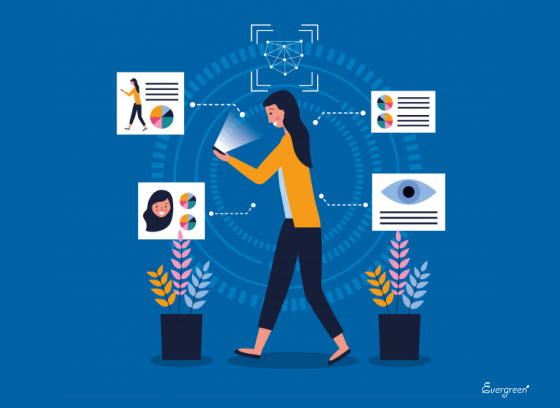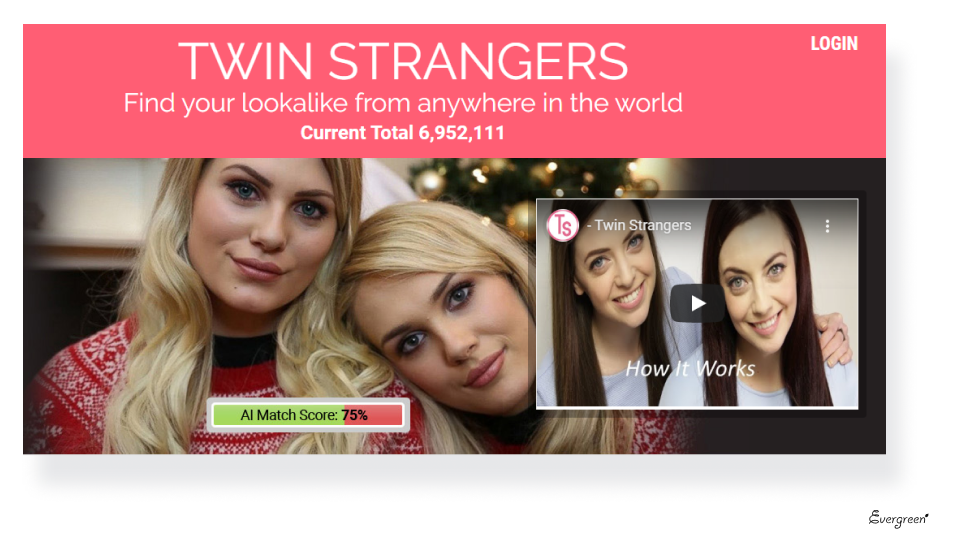At the moment, the most common method of verifying a person's identity is by comparing their appearance with a photo on the identification document (passport, driver's license, etc.). It is necessary in cases like the purchase of goods that are subject to age restrictions (alcohol, cigarettes), for loan issuing, passing customs control, etc. In such a manual check, the final decision as to whether the person who presented the document is its actual owner is made by inspectors: security professionals, police, passport officers, cashiers, etc. But how accurate are these decisions?
Matching a real face and a photo is quite a challenging task in practice, and even professionally trained people are often mistaken. Human performance on face identification is highly error-prone: during one of the early studies on this subject, experienced cashiers, despite all their efforts, still accepted 35% of fake ID-cards as valid, even though the appearance of the bearer was different from that on the document. Even when the photos were taken and compared on the same day under laboratory conditions, the error rate was 10-20% — given there were no other distracting factors. As of April 2020, the best face identification algorithm has an error rate of 0.08%.
There is a difference between facial recognition and facial comparison, even though both of these approaches use the same technology to compare face similarity. Facial recognition assumes that images are being searched for a match through a large dataset and is widely used in law enforcement (to look up photos of criminals), in security systems (for employee verification), in banking (to prevent fraudulent transactions), in the consumer sector (to enable live payments), etc. In the case of face comparison software, two images of the same person are being compared against each other.
Biometric face recognition systems work based on mathematical modeling and face similarity comparison which allows authorities to identify or verify an individual with a corresponding level of confidence. These systems make predictions of whether the face in an image matches a face in another photo, regardless of the facial expression and other attributes like age, facial hair, accessories, and so on.
Moreover, cameras can capture images at a distance, which is ideal for building monitoring systems and hidden identification (contactless biometrics).
Stage 1: Face detection. The system automatically detects a person's face in an image (scanned photo or a video frame). Facial detection is a very important stage of recognition, and it is necessary for further authentication.
Stage 2. Face analysis. Each human face contains 80 nodal points. The facial recognition software can read the geometry of these landmarks, such as distance between the eyes, nose shape, etc. Digital facial recognition relies mostly on 2D rather than 3D imagery because it is easier to match 2D photos with those contained in the database.
Stage 3. Building a faceprint. What we perceive as a face, the recognition system sees as data: the results of facial analysis are converted into a numerical code. Such a ‘facial signature’ is unique for each person.
Stage 4. Finding a match. The system compares a faceprint against the database until a match is found, and returns the results with the attached information like name and address.
Outside the controlled environment, many factors can affect the performance of Face ID systems. Advanced face analysis programs can handle these alterations to some extent, but under bad conditions, they may produce faulty identification results or fail at recognition completely.
Illumination and pose. Face analysis programs work best with images where a person is looking straight into the camera. The lighting conditions should be bright enough to capture all facial features without over-exposing them. The position of a face also changes with head rotation and depends on the viewing angle of an observer.
Facial expressions. A neutral expression is ideal for precise recognition. However, our emotions and mood change constantly, and so do our facial expressions. These differences change the appearance of the face, and it becomes difficult for facial recognition systems to identify it.
Aging. Age and changes in the appearance of a person also affect the ability of face recognition systems to authenticate people.
Facial beautification and change of style. Facial beautification induced by plastic surgery, make-up, and hairstyle can negatively affect the accuracy of face recognition algorithms.
Accessories. The presence of various occluding objects (glasses, facial hair, etc.) on the face, or wearing other accessories like hats, scarves can severely affect the recognition system performance. But modern algorithms are being trained to see through these obstacles.
Special disguise to mislead recognition systems. There are accessories — a combination of fashion and technology — that can trick the algorithms of face identification: lens-shaped masks (their curvature blocks facial recognition from all angles), projectors that superimpose an image of a different face over the wearer's face, glasses fitted with infrared LEDs, special makeup, etc.

Following the quarantine regulations, large numbers of people began wearing medical masks to protect themselves against the virus, and that caused a real issue for surveillance and facial recognition systems. Such forced mass "anonymization" is already considered a security threat in some countries. A prominent example is China, the global market leader in surveillance and facial identification systems.
A Chinese company, Hangwang (one of their main clients is the Ministry of Public Security which controls the police forces), has developed a recognition algorithm that identifies disguised faces with a 95% accuracy. Thanks to the epidemic, image databases used to train the neural network models were updated with a huge number of photos of people wearing masks. The accuracy of Hangwang's ‘standard’ facial recognition algorithms hits 99.5% (without masks).
China’s most valued AI startup, SenseTime, has trained its current recognition product to identify people wearing scarves, masks, and even fake beards or large glasses, with an accuracy of 90%.
Hybrid recognition systems are also gaining ground, e.g., the combination of technologies that recognize facial and body geometry, thermal imaging — for contactless temperature measurement and identification of possible coronavirus patients, and iris recognition systems — based on the fact that iris is as unique as fingerprints.
By the way, the Face ID scanner used in Apple devices can also be configured to recognize a masked face.
Face recognition is a complex technology that can be effectively used in many fields of business and the public sector. Regular users can access it in the form of different popular web services and applications.
Personality authentication. Face ID can be used to prevent banking fraud, to unlock online transactions, for gender-age identification in retail (to detect shoplifters), in medicine — as a form of diagnostic aid, and more. To learn more about the scope and features of our Face ID solution, we recommend you to follow up with our next article.
Search for twins. Web services like Twin Strangers, FamilySearch, or FindClone use AI-based facial recognition algorithms, allowing you to search for your lookalikes, face doubles, or doppelgängers. Your photo will be compared against millions of other profiles until the system finds a match. Sometimes users even find siblings or relatives they never knew existed, even though these services are mostly used for entertainment.

Search for celebrity lookalikes. Many popular face-matching services use face recognition to match a user’s photo with a similar-looking celebrity, for example, StarByFace or PicTriev.
Determine nationality by face. Face recognition technology can be used to explore ethnicity and diversity. A service called Ancestry.ai can do an ethnicity test based on the face analysis after you upload your photo to the system.
Emotion recognition. Computers are gradually learning to understand our emotions by reading the subtle cues in our body language and speech. In our recent article, we wrote about the concept of emotional artificial intelligence that allows machines to become more human-like.
Finding a social network profile by a picture. For example, Facebook has long used built-in face recognition algorithms. So, as a user, you should be careful with your social media — Google will find you if you forgot to turn this option off.
Age detection. Works in a similar way like other face recognition programs. Even our smartphone cameras can have pre-built age detection algorithms.
Biometric face recognition systems and face comparison programs have slowly become part of our working and living environment, due to their high level of accuracy in detecting and verifying a person’s identity — for legal, security, commercial and other purposes.
Our team at Evergreen has experience in developing face recognition solutions for the clients and their successful implementation. Our in-house face comparison software is available for you as a boxed product, or we can develop a customized solution that will best meet the needs of your business.
If you have any questions, would like to learn more about our product and other business cases, feel free to contact us right away.